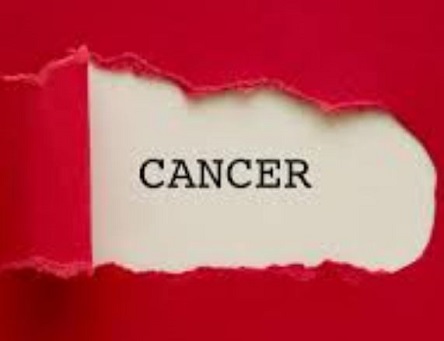
Around the world today, there is a steady rise in the incidence of cancer. It cuts across all age groups and nobody has immunity to developing it in any form. However, in a previous essay on this page, we saw evidence that indicated that cancer cells develop all the time but that certain factors within our bodies prevent them from developing further to cause disease. We also saw that for those people in whom diseases develop, this intricate form of self-regulation fails and the cancer is able to grow. However, the period of such growth takes a minimum of 10 to 15 years before it manifests as a disease. In children, it would mean that the elements which make the development of cancer possible began even while they were still in the womb.
One of the most common early features of cancer is the presence of a growth. Such a growth can occur anywhere in the body and many people would describe it as a lump. Besides its formation, the lump would show evidence of progressive growth. This is the story in breast cancer, bone cancer, kidney cancer and cancer of the ovary. Some of these lumps are obvious as should be clear above and others are not so easy to feel.
However, those lumps which cannot readily be felt would demonstrate certain types of discomfort as a result of the pressure they exert on surrounding structures. It is these pressure effects that doctors analyze to make a diagnosis in many cases right up to itemising what types of investigations to undergo and where these tests should be done. It is therefore important that any lump seen anywhere in the body must not be ignored and should be properly evaluated.
Another factor is sudden and unexplained weight loss. When such weight loss occurs, and it is unplanned and progressive, something must be seriously wrong. It then becomes the responsibility of that person to seek answers by visiting their doctor and having a comprehensive investigation done. Usually, the cause becomes apparent after routine screening for several other disease conditions that are known to cause dramatic weight loss have been eliminated. Many of these tests can be performed fairly quickly, often within days and a clear pathway to the real problem then becomes evident.
Pain is another feature of this range of diseases that often points to the possible cause. When pain is dull, persistent and unrelenting in the absence of some fairly obvious cause, it is time to consider the possibility that cancer might be the cause. Sometimes, such pain would respond to simple painkillers at the initial stages. As time goes on, such treatment options fail and the strength of the analgesic will need to be scaled up in a careful calibration with the intensity of pain. At the terminal stages, relief is not obtained from pain unless such options as opioids and codeine are included in the medications used.
Weakness is a feature of this condition as well. There is a dramatic reduction in energy levels caused by the growth of cancer. The disease produces this by several mechanisms. First, it competes with healthy cells of the body for nutrients. In doing so, those tissues are prevented from getting an optimum supply of nutrients from the diet and weakness results.
Another mechanism cancer employs to cause weakness is by producing a substance that suppresses appetite. Sufferers often have no inclination to eat anything and slow, progressive weakness is the result. In some cases, no medication offered can reverse this situation and the people then progressively become dependent on others around them.
One other feature produced by this condition is cough. Cancer developing within the abdomen can grow to rub against the diaphragm and cause the person to cough. Any cancer within that body space which produces daughter call or growths that attach to the diaphragm will produce a similar effect. As expected, any cancer developing within the chest would cause a similar kind of irritation that would cause a person to cough. Such cough is often dry, irritating and may be associated with chest and back pain.
Sometimes, blood may be coughed up as well. The blood is often fresh, may have clots in it and can be progressively worse in tandem with the progression of the disease. Many people will not go to the hospital unless they are bleeding from somewhere or they cannot eat or are not able to pass stool. For many patients, therefore, the appearance of blood in streaks or clots with the coughing is the impetus they need to visit the hospital.
A change in bowel habits often spells trouble. The stools become thinner than usual and may now have the dimensions of a pencil. Their passage could also become far between, not to mention a frankly irregular and unpredictable pattern. As time passes, there may be blood as well in the stool and later still, the stools stop being passed completely. In the beginning, the stool may be passed in a watery or loose form after several days of constipation. This does not happen as a result of changes in diet but as a functional problem brought about by changes in the caliber of the intestine.
Feeding amongst cancer patients takes different patterns. We have seen above how the proteins secreted by the cancer cells suppress the appetite. The other change we can see with feeding is the situation of early satiety; a situation in which such a person takes a few spoonfuls of food and becomes satisfied. This is frequently seen in cancer of the stomach. Here, the growing lump within the stomach is responsible for taking up a lot of space and it therefore competes for that space with the food the person eats. In this case, the growing mass often wins and the person, who is now full all the time, gets satisfied with only a small amount of food. The calories obtained from such food are insufficient to maintain the normal body size and weight loss results.
When cancer develops, anaemia follows sooner or later. This happens for a variety of reasons, not the least of which is the reducing ability to feed. Other reasons are due to intermittent bleeding, destruction of blood cells and fierce competition from the cancer cells for the body’s nutrients. With the passage of time, the severity of anaemia is often a reflection of the duration of the illness. Frequently, blood transfusion is undertaken at intervals to preserve some quality of life. In a steady state, long before things degenerate to the point of blood transfusion, blood tonics prescribed by a doctor are often the mainstay of maintaining healthy blood counts.
To have a fever is often a sign that you have an infection. Usually, such a fever ought to go away with the relevant treatment. If it fails to do so however, and it becomes persistent instead, it could be a sign that there is a cancer to contend with. The same is true of swollen lymph nodes which are seen in the groins, the armpits and around the neck. In most circumstances, those swellings come and go often in response to an infection. When they fail to resolve with treatment, it is time to worry about something else.
You may be interested

Arsenal Equal Chelsea’s London Derby Feat After 5-1 Win Vs Palace
Webby - December 21, 2024Arsenal equaled Chelsea’s London derby achievement following their 5-1 win against Crystal Palace in Saturday’s Premier League game at Selhurst…

Haaland Backs Guardiola To Turn Man City’s Poor Form Around
Webby - December 21, 2024Erling Haaland had said he and his Manchester City teammates are still backing manager Pep Guardiola to turn the team’s…

PSG To Reignite Interest In Osimhen
Webby - December 21, 2024Paris Saint-Germain have contacted Napoli to discuss signing Victor Osimhen in January, according to reports in France.It is reported that…

















![American Pastor, David Wilson Seen Eating The Box Of Woman Who Isn’t His Wife [Video]](https://onlinenigeria.com/wp-content/uploads/2019/10/american-pastor-david-wilson-seen-eating-the-box-of-woman-who-isnt-his-wife-video-150x150.jpg)









